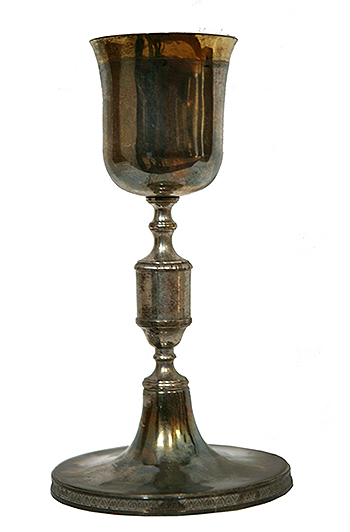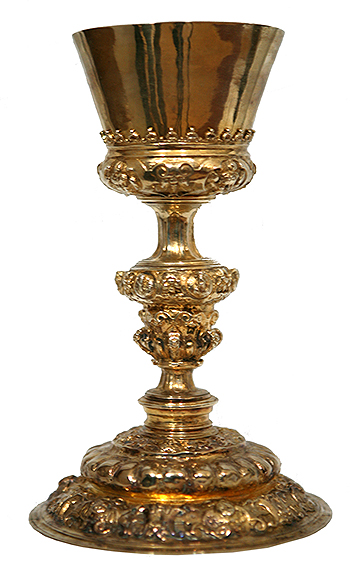5 October
Conferences
THE BAROQUE IN VILLAFRANCA
The art of silversmithing in Villafranca
D. Ignacio Miguéliz Valcarlos
Chair of Navarrese Heritage and Art
The art of silversmithing in Villafranca constitutes a relatively poor chapter in the artistic panorama of the town. Even more so when the centuries of the Baroque, a time when the town experienced a great flowering, coincided with a period of splendour in this art, when any work used both in the liturgy and in the adornment of images and churches was likely to be made in silver. Thus, in terms of architecture, Villafranca experienced a period of splendour throughout the 18th century, as witnessed by the richness of its architecture, both ecclesiastical and civil. In the case of the former, the churches of Santa Eufemia and El Portal and the convent of the Discalced Carmelites are worth mentioning, while examples of the latter are the palaces of La Encomienda, Bobadilla and the Count of Rodezno, among others. However, as far as silverware is concerned, there is scarcely any evidence of this power, as the silverware preserved in the parish churches of Villafranca barely amounts to fifteen pieces. However, thanks to the documentary evidence preserved, we can see that this lack of works is due more to the losses suffered throughout history than to the lack of commissions.
Thus, thanks to this documentation, we know that in 1582 the parish of Santa Eufemia commissioned a processional cross from the silversmith Hernando de Oñate el Viejo. This commission was followed by others, such as a small cauldron and a small holder from the Pamplona master Simón de Yoldi in 1693; a lamp for the high altar from Manuel de Cearrote, an artisan from Tudela, in 1701; a monstrance, sceptres and candles made by the Tudela artisan José Ochoa in 1761; a lamp for Nuestra Señora del Portal by the Tudela artisan José Caballero in 1763; a silver source bought from Ramón Remírez in 1773, four lamps for Nuestra Señora del Rosario by the Pamplona master Pedro Antonio de Sasa in 1805 to replace those lost during the War of the Convention; or the cross, sceptres and candlesticks ordered in 1818 to replace those that disappeared during the War of Independence, and which constitute the last documented order for the parish church. Along with these data there are also two inventories of the assets of the church of Santa Eufemia from the 18th century that show the accumulation of silver jewellery by the parish.
However, as we have already mentioned, we know that the ecclesiastical treasures of Villafranca suffered great losses during the wars that took place from the end of the 18th century to the middle of the 19th century, those of the Convention (1794-1795) and Independence (1808-1814), fought against the French, and the First Carlist War (1833-1840). Thus, in the first two wars we know that on the one hand the churches of Villafranca were plundered by the French armies, and their silver seized to pay taxes and war expenses, both by the Town Hall and the Central Government, as well as by the French.
Due to all this, very few pieces are currently preserved, and all of them are of the usual types found in ecclesiastical treasures, being mainly chalices, all from Navarre except for one from the Real Fábrica de Platería Martínez in Madrid. Likewise, not all of them are silver, as several pieces are made of metal, most of them from the second half of the 19th and 20th centuries. Of the pieces that have survived to the present day, two stand out: the chalice made by Hernando de Oñate el Mayor in the last third of the 16th century, probably linked to the execution of the processional cross that he was commissioned to make at that time. On the other hand, the reliquary of Saint Eufemia, sent from Rome in 1796 by Don Javier Jiménez de Tejada, knight and Commander of Villafranca by the Order of Malta, and nephew of Francisco Jiménez de Tejada y Eslava, Grand Master of the same, who had also previously been Commander of Villafranca and Grand Prior in Navarre of the same Order.

Plate 1. Chalice. Madrid. Royal Martínez Silverware Factory. First quarter of the 19th century

Plate 2. Chalice. Pamplona. Hernando de Oñate the Elder. Last third of the 16th century

Plate 3. Reliquary of Saint Euphemia. Rome. Anonymous. 1796.
